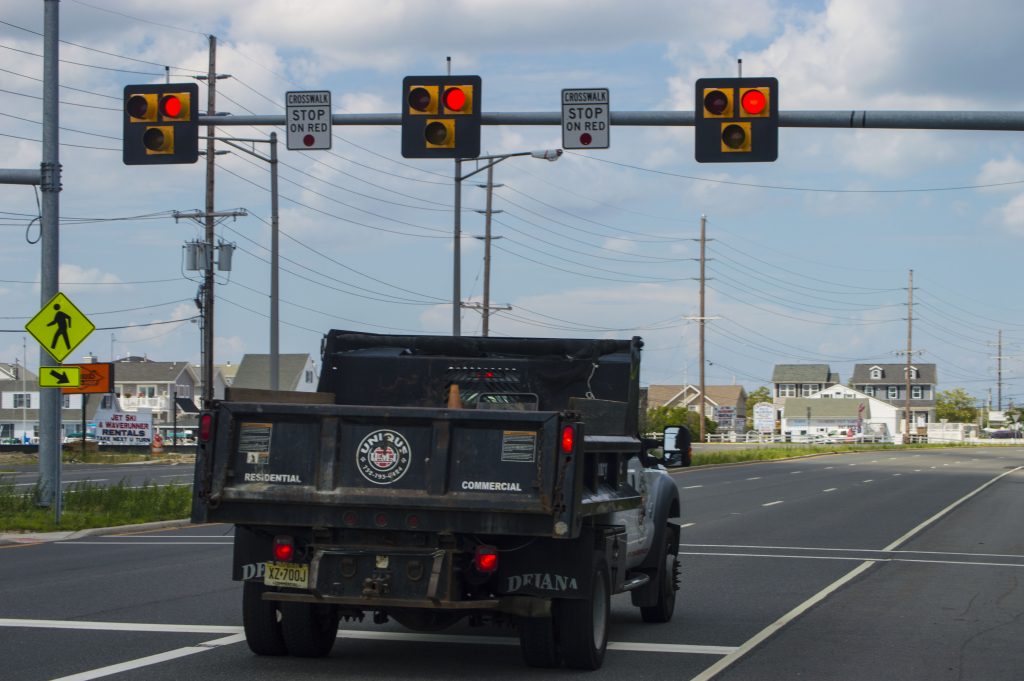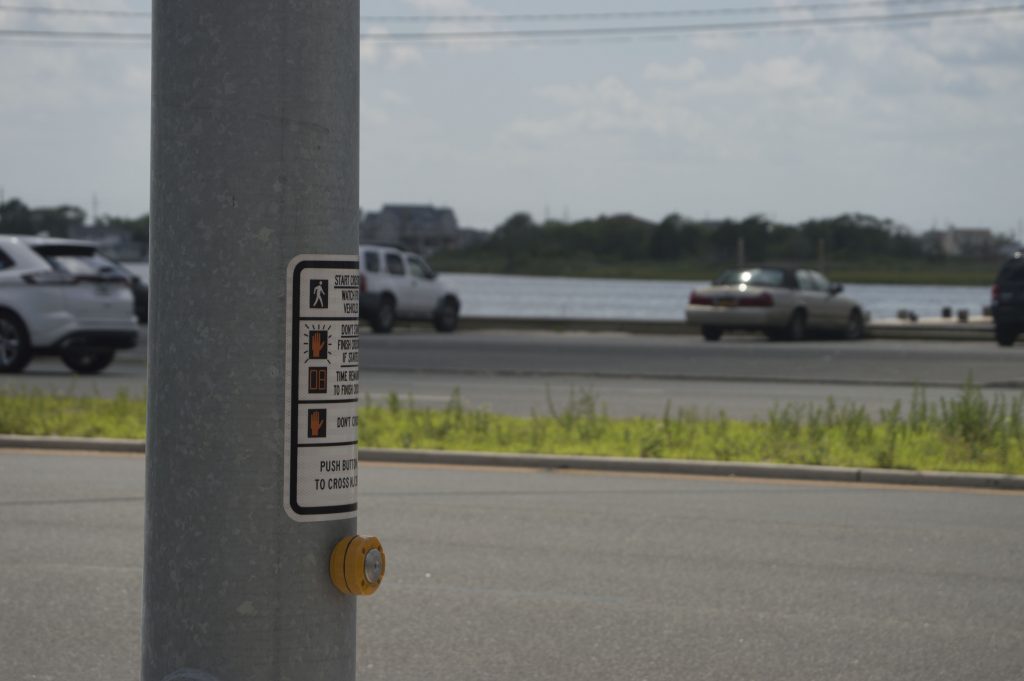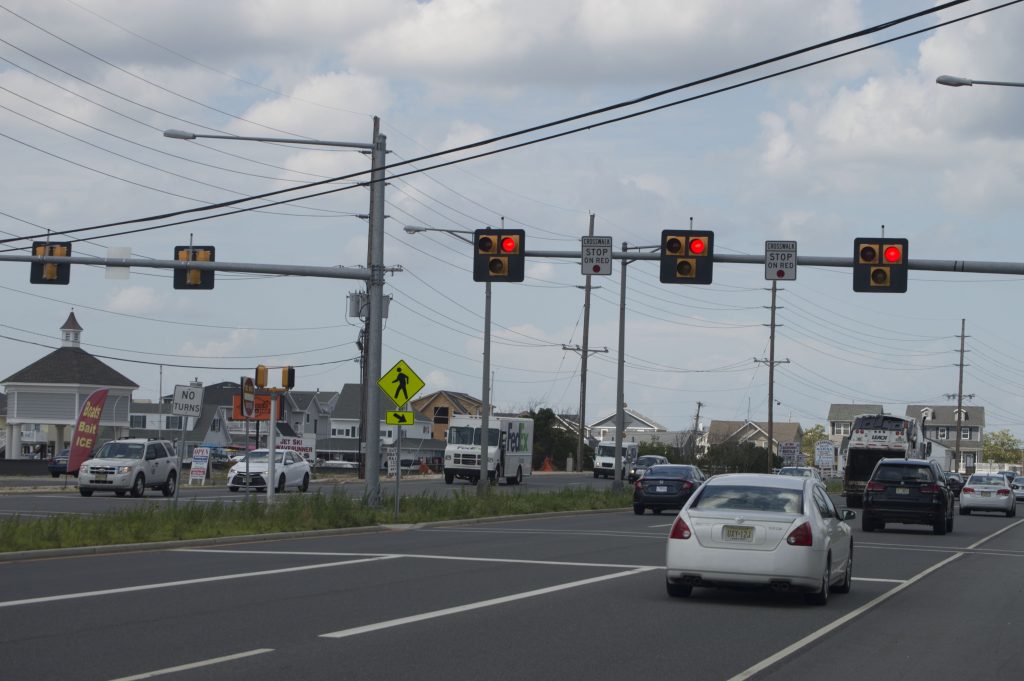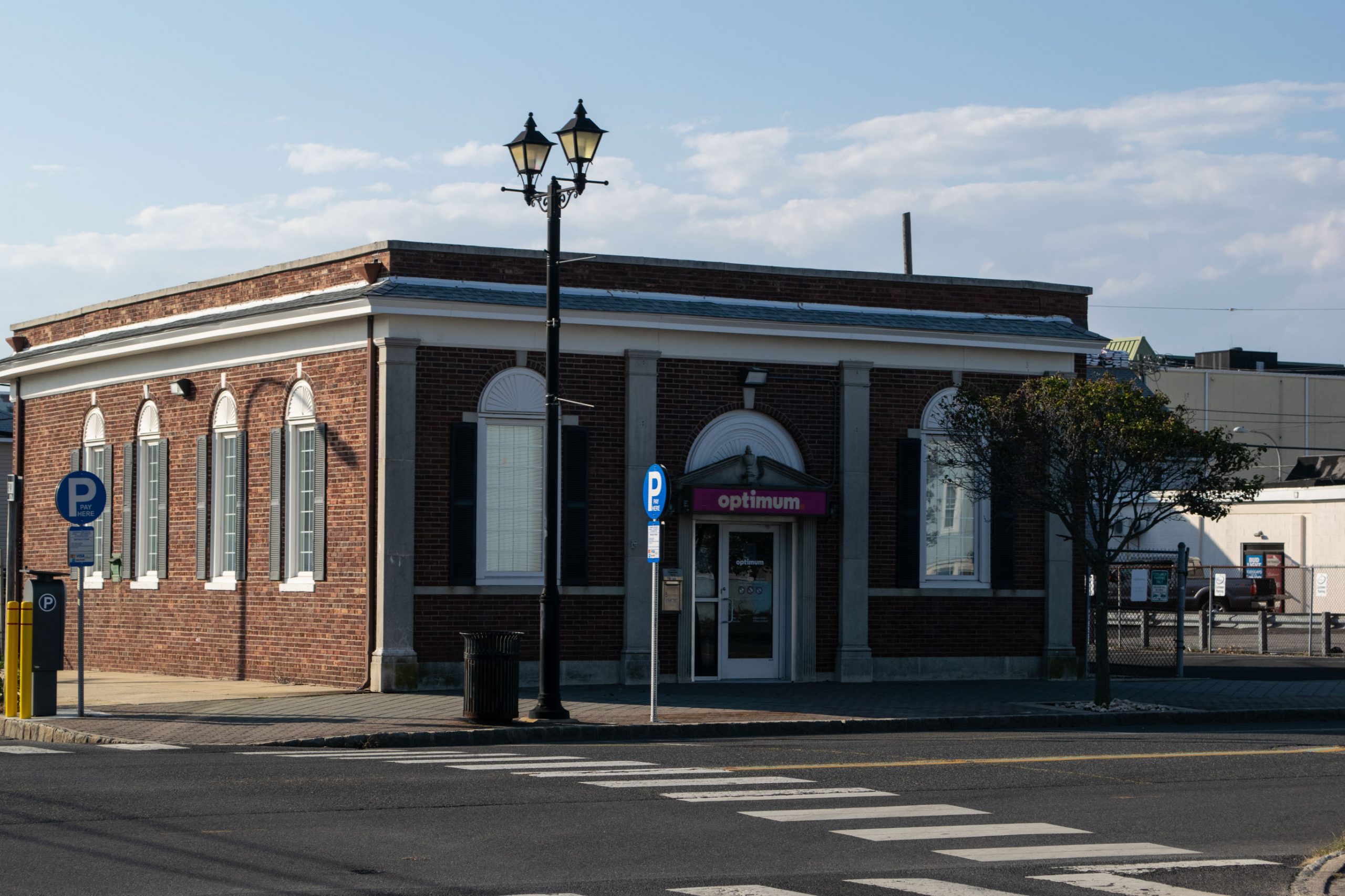It might seem a bit unnatural to see a long yellow light, followed by a blinking red light – in the middle of the highway – while driving. But for drivers entering the barrier island from the Route 37 bridge, it’s become a common sight this summer.
The traffic signal is a large-scale version of a pedestrian crossing signal known as a HAWK, which stands for High-Intensity Active Crosswalk. The Seaside Heights signal was the first of its kind in Ocean County until a second was unveiled this week in Long Beach Island.
Though the state law dictating that vehicles must stop for pedestrians in a crosswalk is well known, the rules for stopping at a HAWK signal are a bit unique. According to officials, here is what drivers are required to do when they face such a light pattern:
- When a pedestrian presses the walk button, the lights across the roadway will immediately begin flashing yellow, before turning to solid yellow. The solid yellow signals drivers in the same way a traditional yellow light would signal them that the light is about to turn red.
- Next, the lights will turn solid red to drivers, and the pedestrian will see a “walk” signal. Drivers must stop the let the pedestrian cross.
- After a short period of time, the red lights will begin flashing. This means that pedestrians can finish crossing if they are already in the intersection, but may no longer start crossing. At this point, even though the light is flashing red, vehicles may proceed through after coming to a complete stop, and ensuring no pedestrians are in the midst of crossing.
HAWK beacons are becoming more common across the United States after first being introduced in Tuscon, Ariz. in 2000 as an experimental program. It became approved as a national traffic control device in 2009.

Advertisement

Police, Fire & Courts
Police Investigating Possible Shots Fired in Seaside Heights

Police, Fire & Courts
Cops: Juvenile Arrested After 118mph Joy Ride in Seaside Heights, Toms River Kills 2

Seaside Heights & Seaside Park
Seaside Heights Mourns Passing of Boardwalk Legend, Still Working Into His 90s











